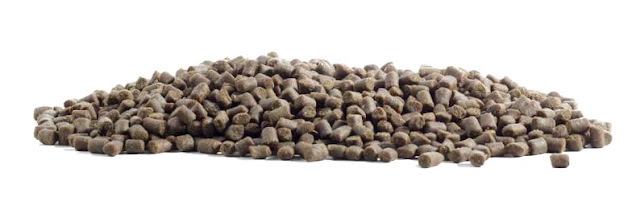by Catharina Nieuwenhuizen MBA, Nutritional and Technical Support Manager at Noba Vital Lipids
First published in International Aquafeed, July-August 2015
Lecithin may be produced from egg yolk, but more commonly used in aquafeed are soya and rapeseed lecithin. It is well known that the phospholipids (PL) present in lecithin act as an emulsifier of lipids in the animal stomach and gut, but especially the nutritional benefits of lecithin is why fish nutritionists like to include it in fish and shrimp diets. Lecithin is widely used in feed for larval and juvenile stages of various species of fish and crustaceans, because those developing fish have a limited ability for novo phospholipid synthesis.
Phosphatidylcholine (PC) is the most abundant PL in fish tissues and is among many others an important catabolic energy source for egg and larval embryogenesis and important for intestinal lipid absorption. In literature many examples may be found of the benefits of PL on survival, growth, resistance to stress tests, prevention of malformations, essential lipid composition of the fish.
Seemingly phosphatidylcholine (PC) is more effective for growth improvement while phosphatidylinositol (PI) and phosphatidylethanolamine (PE) are more important for survival and preventing deformities in the developing fish and are a structural component of practically all cell membranes. This article will highlight some of the other reasons and benefits to include lecithin in aquafeed for all life stages
Read the full article in International Aquafeed HERE.
First published in International Aquafeed, July-August 2015
Lecithin may be produced from egg yolk, but more commonly used in aquafeed are soya and rapeseed lecithin. It is well known that the phospholipids (PL) present in lecithin act as an emulsifier of lipids in the animal stomach and gut, but especially the nutritional benefits of lecithin is why fish nutritionists like to include it in fish and shrimp diets. Lecithin is widely used in feed for larval and juvenile stages of various species of fish and crustaceans, because those developing fish have a limited ability for novo phospholipid synthesis.
Phosphatidylcholine (PC) is the most abundant PL in fish tissues and is among many others an important catabolic energy source for egg and larval embryogenesis and important for intestinal lipid absorption. In literature many examples may be found of the benefits of PL on survival, growth, resistance to stress tests, prevention of malformations, essential lipid composition of the fish.
Seemingly phosphatidylcholine (PC) is more effective for growth improvement while phosphatidylinositol (PI) and phosphatidylethanolamine (PE) are more important for survival and preventing deformities in the developing fish and are a structural component of practically all cell membranes. This article will highlight some of the other reasons and benefits to include lecithin in aquafeed for all life stages
Read the full article in International Aquafeed HERE.
The Aquaculturists
This blog is maintained by The Aquaculturists staff and is supported by the
magazine International Aquafeed which is published by Perendale Publishers Ltd
For additional daily news from aquaculture around the world: aquaculture-news


No comments:
Post a Comment